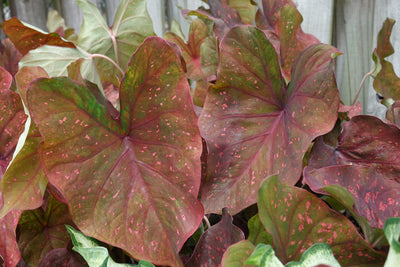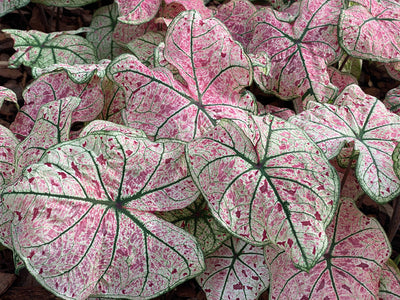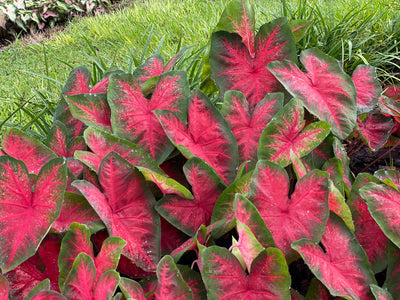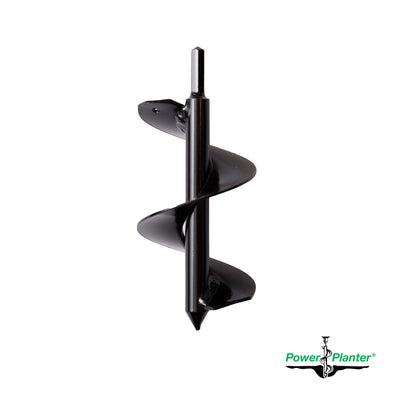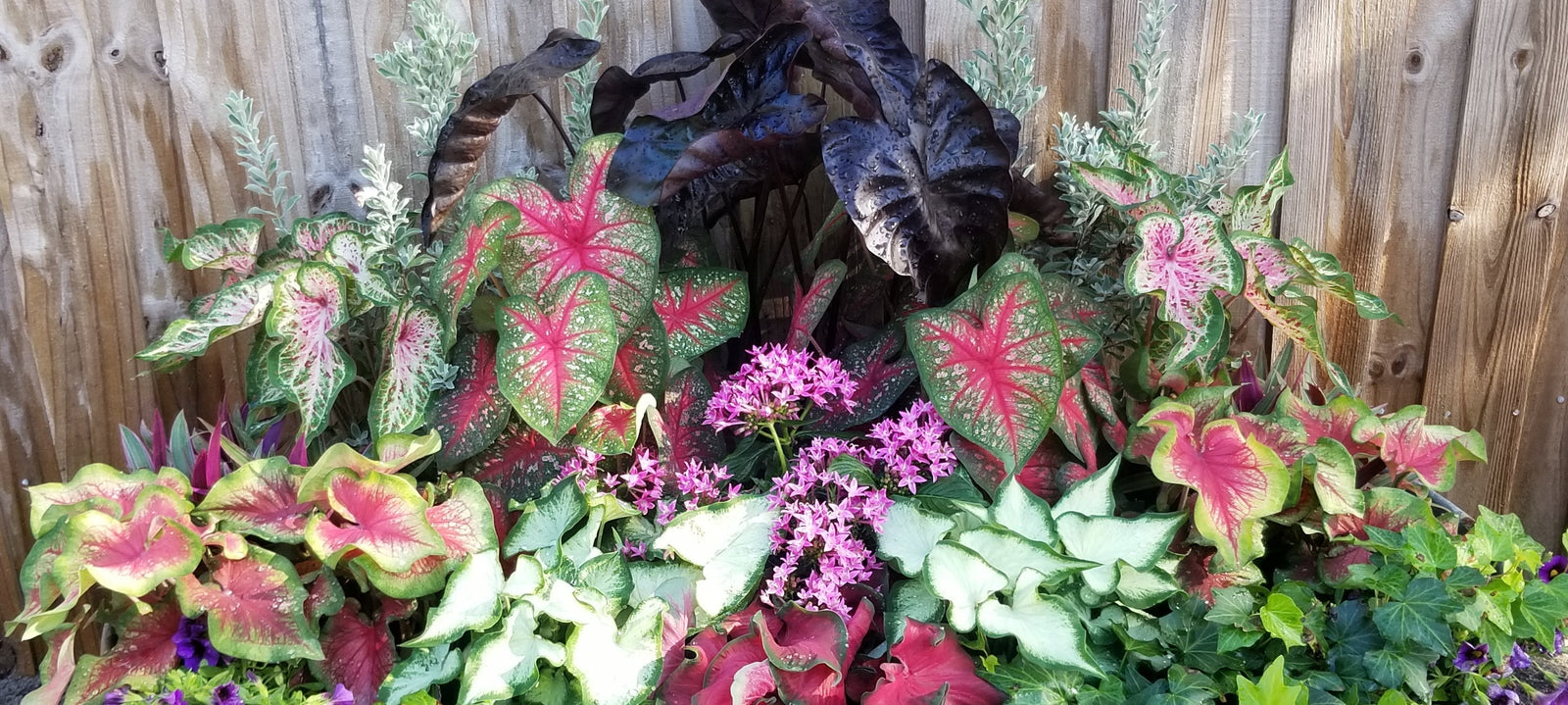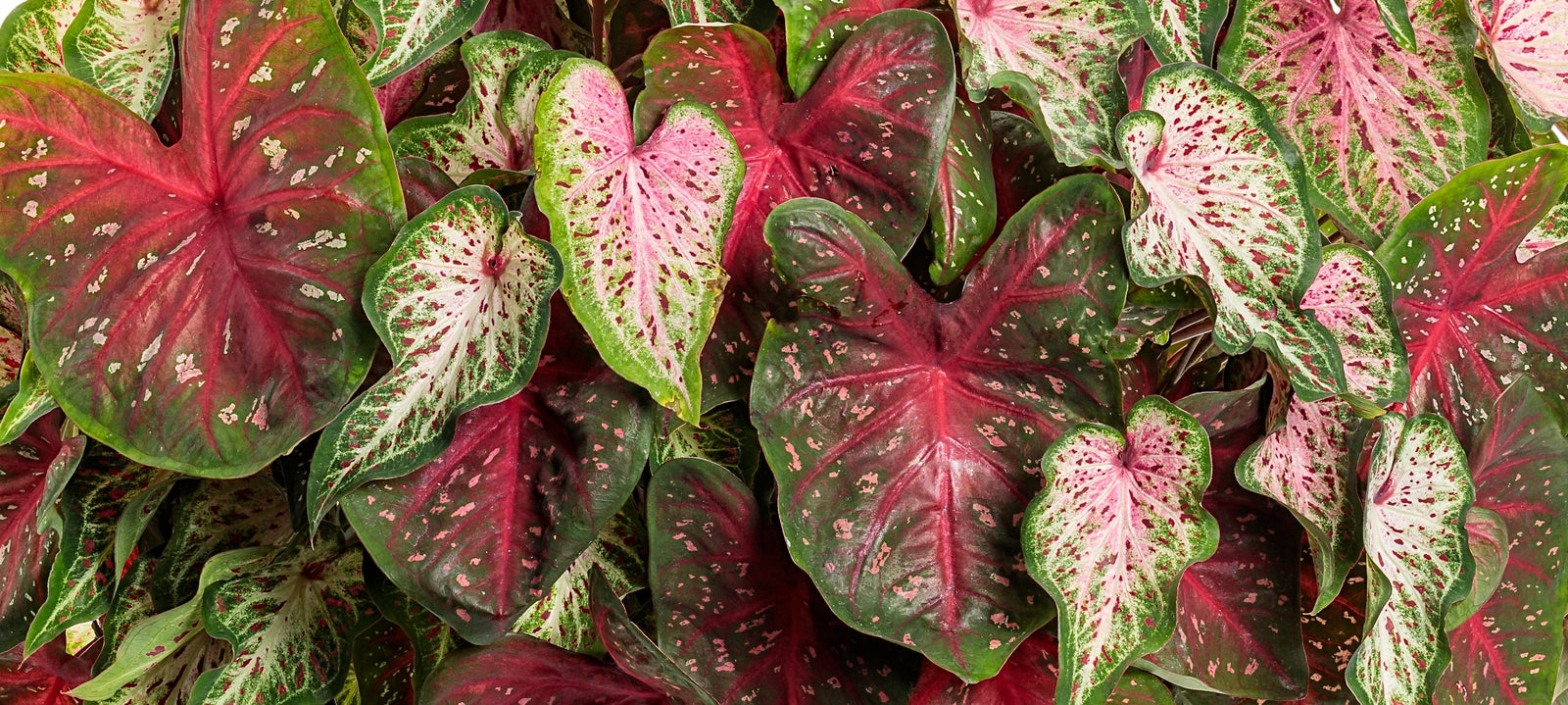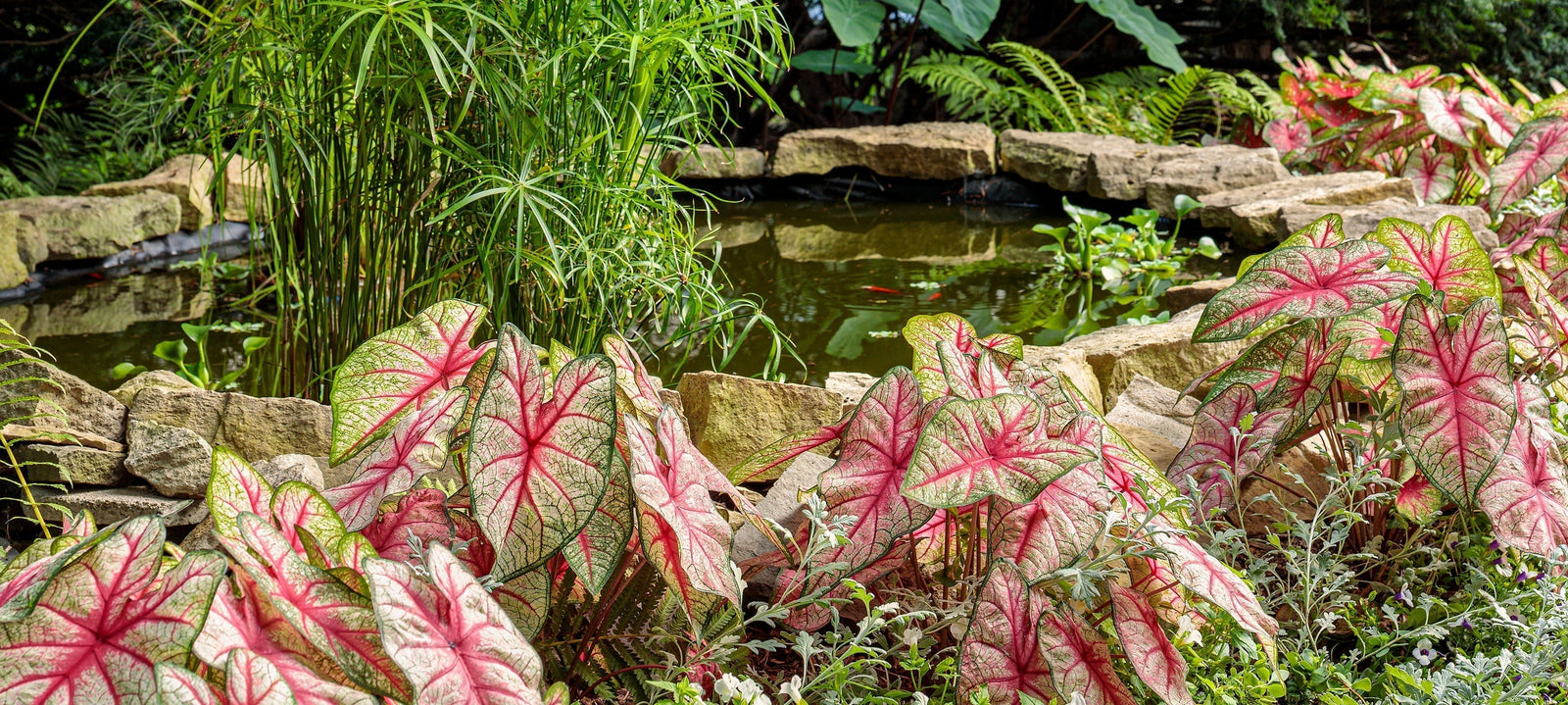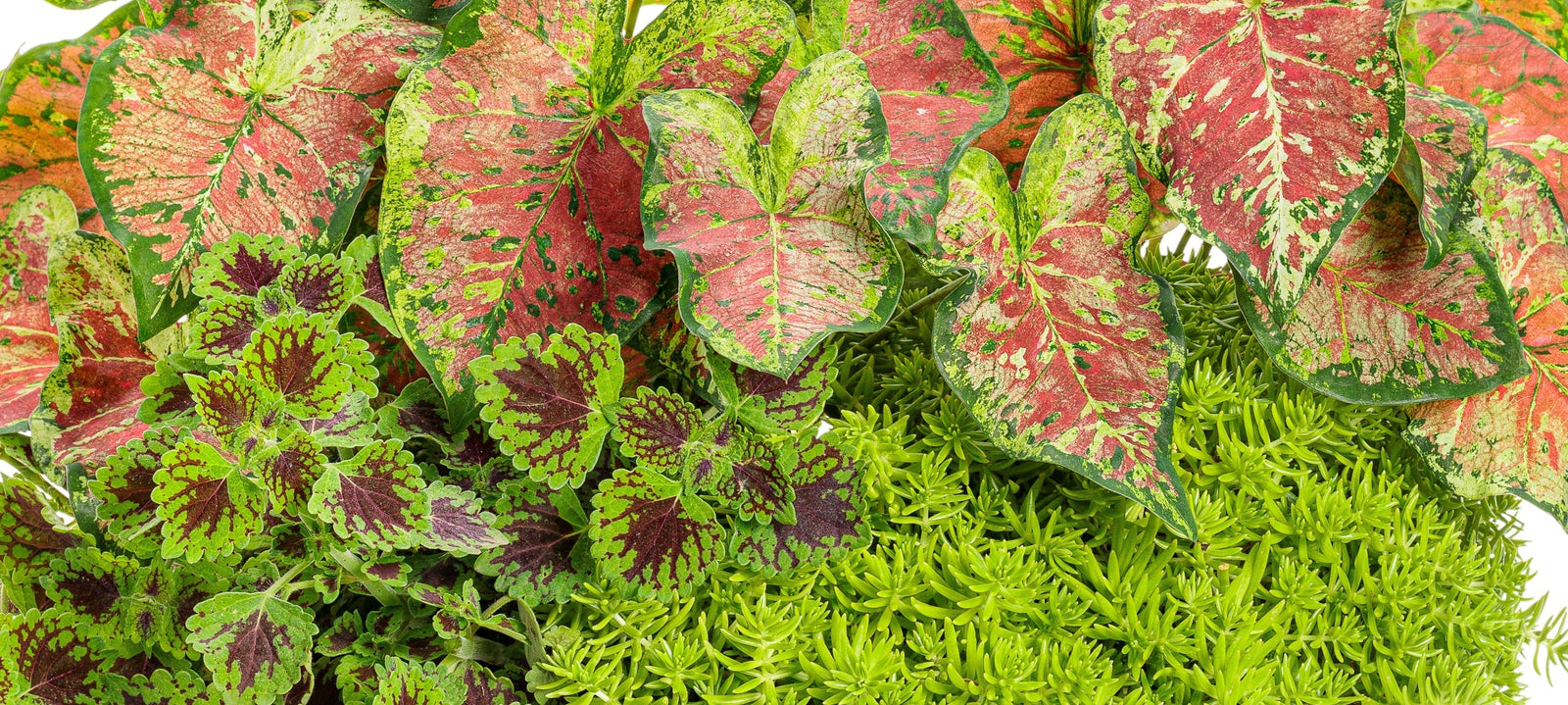Water and Fertilizer Tips for Happy, Healthy Caladiums
April 04, 2025
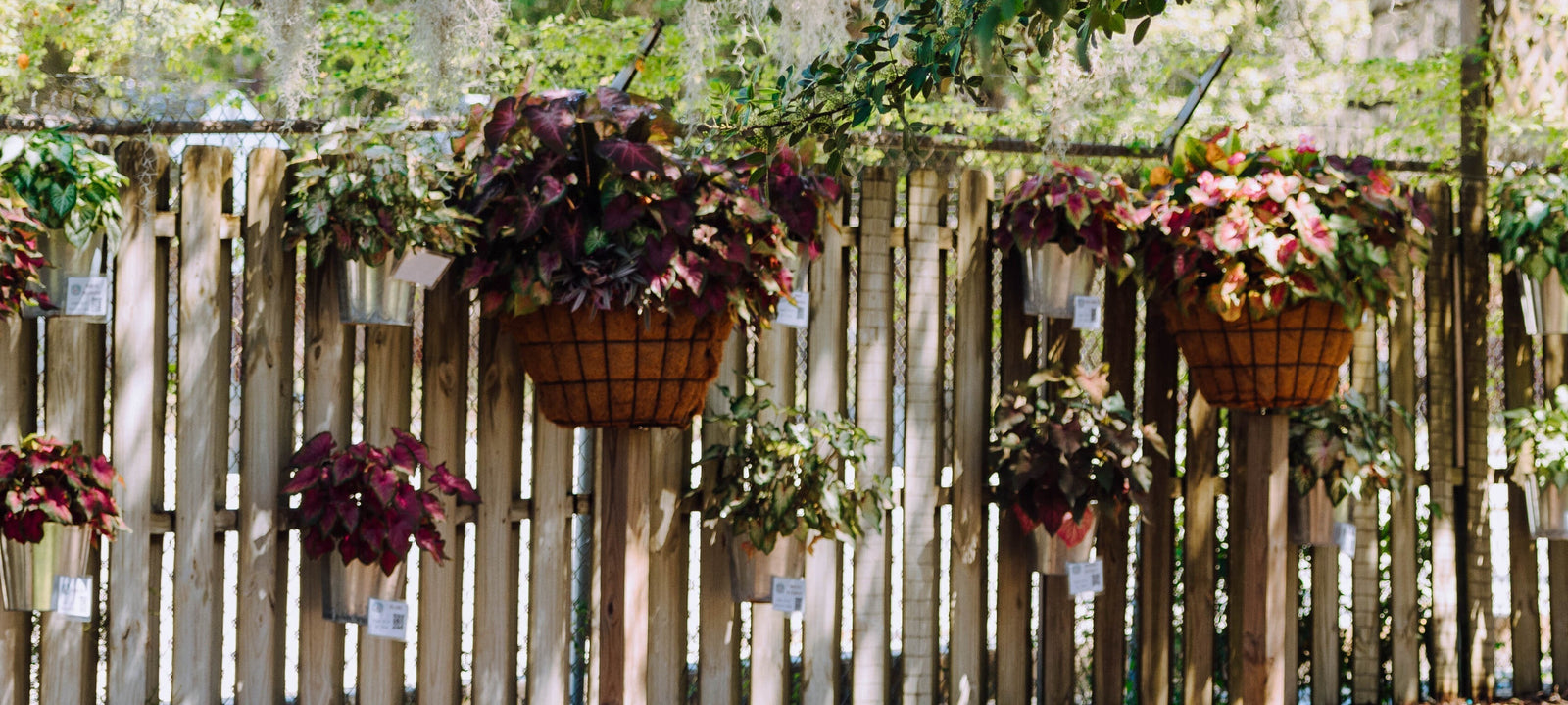
Gardeners of every skill level, from novice to professional, can succeed in growing caladiums. One key reason is that despite their fancy appearance, caladiums’ water and nutrient needs are really quite basic.
First things first: the right soil for planting caladiums
Planting caladiums in the right kind of soil makes everything easier. They prefer well-drained, slightly acidic soil rich in organic matter. Sandy or loamy soil, especially if it’s been amended with compost or peat moss, provides a great foundation.
Drainage is crucial; too much water turns caladium roots to mush. If there’s a spot in your landscape where water puddles after a rain, it’s not a great site for caladiums.
How often to water caladiums
Caladiums have moderate water needs. They like soil that’s moist, but not saturated. You don’t need to soak the ground; there shouldn’t be puddles left when you’re finished watering.
In the spring and summer, water when the top one to two inches of soil are dry. In most climates, this means once or twice a week. If you’re in a dry climate, you may need to water more often. Caladiums in sunny spots need water more frequently than those in full shade.
Caladiums are tropical plants that thrive in high humidity. If your climate is dry or experiencing a drought, your caladiums will love an occasional misting to raise their humidity level.
When to water
Watering in the early morning or late afternoon – before or after the heat of the day – makes caladiums happy.
Avoid watering in the evening. If the leaves don’t have time to dry off before the sun goes down, it can increase the risk of fungal growth.
|
Signs of Overwatering |
Signs of Underwatering |
|
Yellow leaves |
Wilting |
|
Droopiness |
Curling leaves |
|
Mushy stems |
Brown or crispy leaf edges |
|
Root rot |
Slow growth |
Fertilizing your caladiums
Fertilizer replenishes the nutrients in exhausted soil, giving plants the food they need to thrive. Nutrients like nitrogen, phosphorus, and potassium (NPK) are essential for healthy growth.
Some plants, like petunias, are notoriously “hungry” and need a lot of fertilizer. Caladiums are more easygoing. They like a little bone meal or a balanced fertilizer about once a month. If you mix a little slow-release plant food into the soil when you plant them, you may not need to fertilize them again all season.
Choose the right fertilizer
Caladiums like a fertilizer with a balanced blend of nitrogen, phosphorus, and potassium, like a 6-2-6 mix.
If a caladium takes in too much nitrogen, it will grow lots of green leaves but won’t have all the vibrant color caladiums are known for. If you’re seeing more green than color in your plant, try a blend with a little less nitrogen, like a 5-2-10 mix.
When to fertilize
If you opt for a water-soluble fertilizer, start every four to six weeks in the spring as new growth gets underway.
Keep fertilizing about once a month during the peak growing season, from late spring through summer. Caladiums in full sun use more energy, so you can fertilize them more often— as much as every two weeks.
As summer fades to fall and caladiums’ growth starts to wind down, taper off the frequency of fertilizer, stopping altogether once plants go dormant.
How to fertilize caladiums
-
Test your soil pH: the ideal pH for nutrient uptake is between 5 and 7.
-
Water your plant: before applying water-soluble fertilizer, water the caladium as usual. This dilutes the fertilizer in the soil, helping prevent root burn.
-
Apply fertilizer: pour your fertilizer solution evenly around the base of the plant, avoiding contact with the leaves.
-
Monitor the plant: after fertilizing, monitor your plant for improved growth and for any negative reactions like leaf burn.
Avoid these mistakes when fertilizing your caladiums
-
Overfertilizing. A novice gardener might think that more fertilizer equals more growth, but that’s not the case—just like more food doesn’t necessarily equal a healthier person.
-
Follow the manufacturer’s directions for diluting your fertilizer, and don’t fertilize more often than once every two to four weeks.
Signs of overfertilizing a caladium include brown leaf tips, a salt crust on the surface of the soil, and damaged roots. -
Underfertilizing. Not offering enough nutrients is also detrimental. If your caladium isn’t thriving, consider the possibility it needs to be fertilized. Signs a caladium needs fertilizer include small, pale leaves and stunted growth.
-
Using the wrong fertilizer. Caladiums’ fertilizer needs are basic. Using a fertilizer that delivers more than they need can do more harm than good. Always choose a balanced blend or a low-nitrogen mix like a 5-2-10.
With the right care, caladiums will bring vibrant color to your garden all season long. Their moderate water and fertilizer needs, combined with their tolerance for both sun and shade, make the caladium an ideal plant for every gardener to try, whatever their skill level.

